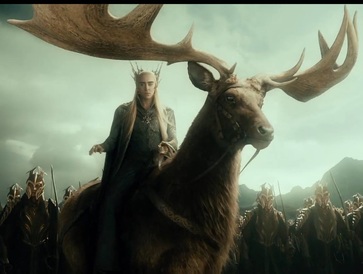 Image: lotr.wikia.com Image: lotr.wikia.com Leave it to the mighty elven king of the Woodland realm to enter battle in style - not on some robust destrier, but on an enormous, graceful elk. Although King Thranduil’s mount is not specified in the book, the film adaptions use a giant elk as the elven king’s war steed. The elk can be seen in the prologue of The Hobbit: An Unexpected Journey and during The Hobbit: The Battle of the Five Armies as Thranduil’s method of transportation. Throughout the final battle, the elk aided in fighting off the orcs by kicking, and using its huge antlers to crush and fling the enemy. Incredibly, this massive elk existed outside of Middle-earth. In fact, despite its common name (Irish elk), it was not actually an elk, but was the largest species of deer to have ever lived. Standing at 2.1m (7ft) at the shoulder, weighing around 680kg (1500lbs), and having an antler spread of up to 3.9m (13ft), the Megaloceros giganteus was a formidable herbivore. Through the Pleistocene and into the early Holocene epochs, 2,000 years after the extinction of other megafauna 10,000 years ago, this animal persisted within grassland habitats. Although the first remains were found in peat bog deposits in Ireland, adding to the other part of the common name, Irish elk ranged all over Europe, N. Asia, N. Africa, and Siberia. A similar species was even found in China. 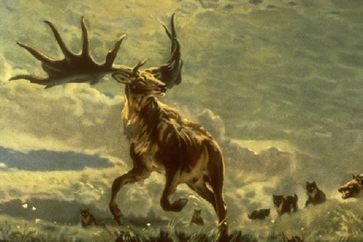 Image: www.geology.ohio-state.edu/~vonfrese/gs100/lect33/ Image: www.geology.ohio-state.edu/~vonfrese/gs100/lect33/ Why the ridiculously enormous antlers? As with the antlered or horned species of today, the antlers of the Irish elk were probably used in combat between males to show off their strength to earn breeding rights with females. Another possibility is that the antlers were a visual display for sexual selection. The antlers face forward, showing maximum surface area. This would signal to the ladies, “Look how impressive my antlers are! Aren’t I such a stud?” If they were used for sexual selection, then the larger, stronger antlers would become a favored trait among males, which would then continue to be passed on to offspring. When it came to selecting a war mount, Thranduil chose wisely. Other than the ability to crush orcs, those powerful, scooping antlers would have been an excellent set of weapons in defense against predators as well. If that did not work, the skeleton of the Irish elk indicates that the animal was an endurance runner. Therefore, it could out pace even the swiftest carnivores. 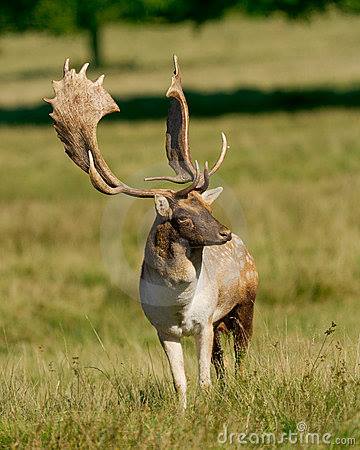 Photo: Fallow deer, www.dreamstime.com Photo: Fallow deer, www.dreamstime.com An analysis of mitochondrial DNA (mtDNA) places Irish elk within the “Old World deer” family, and in the subfamily Cervinae. Its closest living relatives today are the fallow deer species (Dama dama and D. mesopotamica), red deer (Cervus elaphus), and wapiti (C. canadensis). The fallow deer, however, have the most common characteristics which links the ancient deer more to the Dama clad. There are 2 points on the antlers, 1 point on the skull, 2 dental characteristics, 1 key similarity in the vertebrae and 2 limb-bone related traits that are shared between Irish elk and fallow deer. Another trait that the deer share is an enlarged larynx, or a “swollen Adam’s apple”. From these characteristics, fallow deer are considered to be the last representatives of this unique deer group. There are a couple main theories on why this large deer went extinct. In the 19th and 20th centuries, the most common theory was due to orthogenesis. Orthogenesis is the result of a change in some sort of internal trend within a lineage, as opposed to natural selection. In the case of the Irish elk, it was believed that the evolution of such massive antlers as a favorable trait was the animal’s downfall, because it was unable to support the weight on its head or avoid entanglement through forests. The second extinction theory is that the animal could not adapt to the environmental changes from the receding ice. It simply lost its habitat. Without a place to live, there were no resources to live on, and so ends the Irish elk. References Gonzolez, S., Kitchener, A.C. & Lister, A.M. (2000). Survival of the Irish elk into the Holocene. Nature, 405(6788): 753-754. Stewart, W. (2015). Giant Prehistoric Deer Lived 2,000 years after ‘Extinction’: Population of Irish Elk Thrived in Siberia after the Ice Age. www.dailymail.co.uk/ Lister, A.M., Edwards, C.J., Nock, D.A.W., Bunce, M., van Pijlen, I.A., Bradley, D.G., Thomas, M.G. & Barnes, I. (2005). The Phylogenic position of the ‘giant deer’ Magaloceros giganteus. Nature, 438(8): 850-853. Lotr.wikia.com/wiki/Thranduil’s_elk Pitra, C., Fickel, J., Meijaard, E. & Groves, C. (2004). Evolution and phylogeny of old world deer. Molecular Phylogenetics and Evolution, 33: 880-895. www.amnh.org www.ucmp.berkeley.edu www.bbc.co.uk/nature/life/irish-elk
1 Comment
Leave a Reply. |
Blog Archive
|
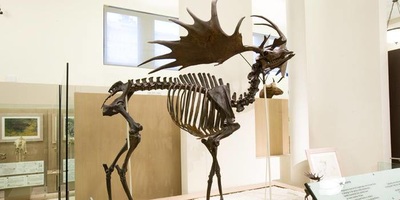
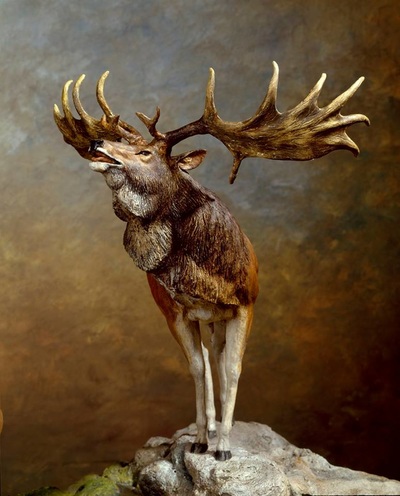
 RSS Feed
RSS Feed
